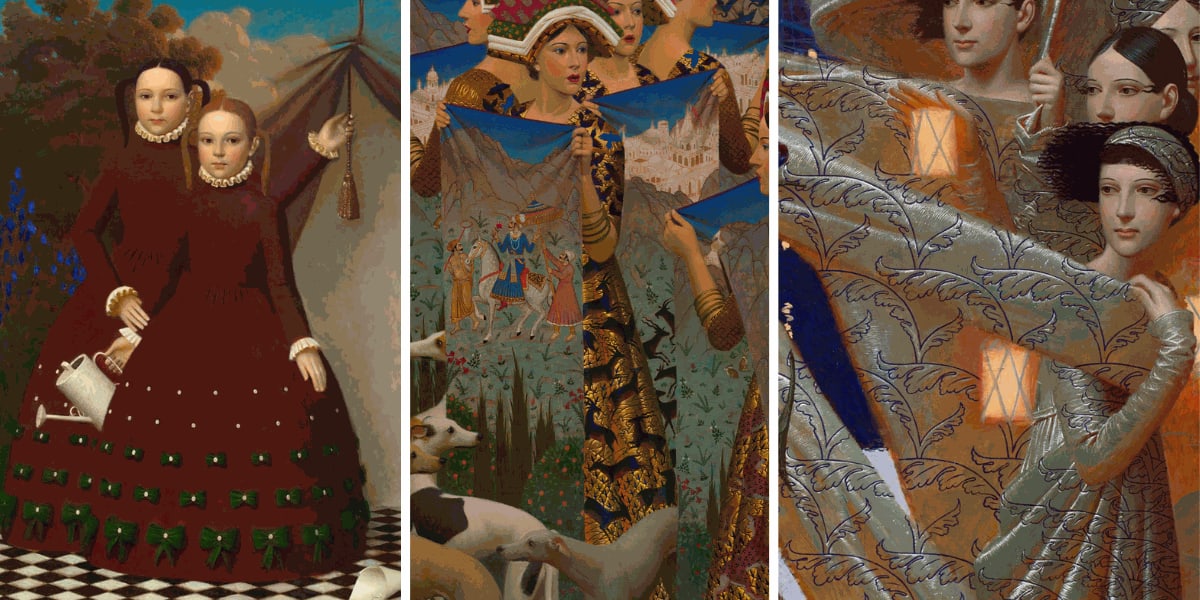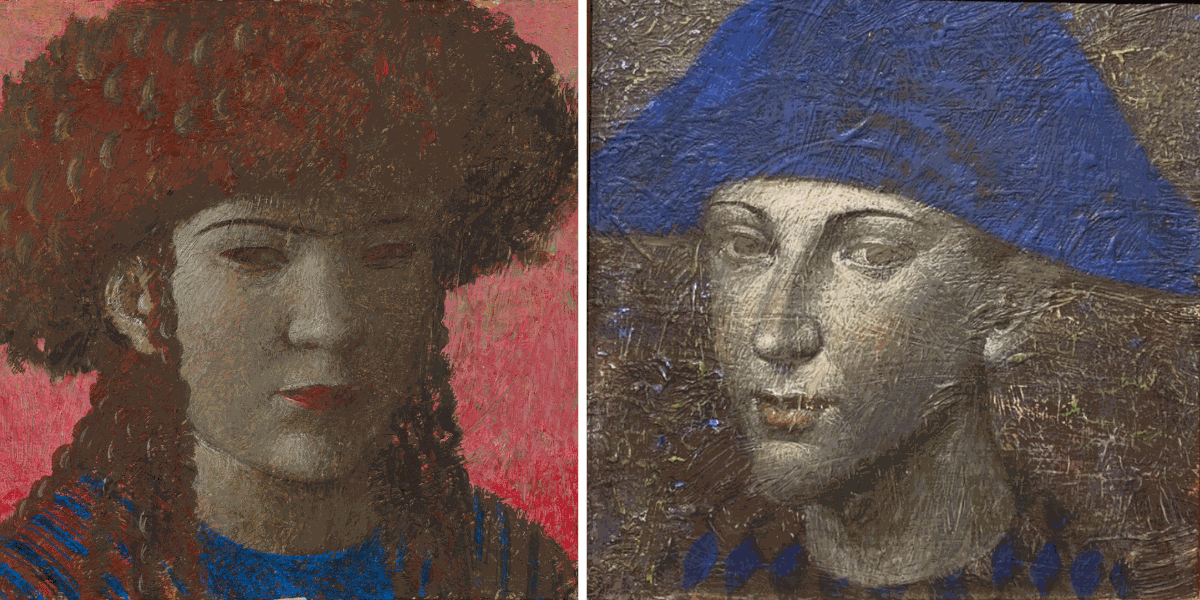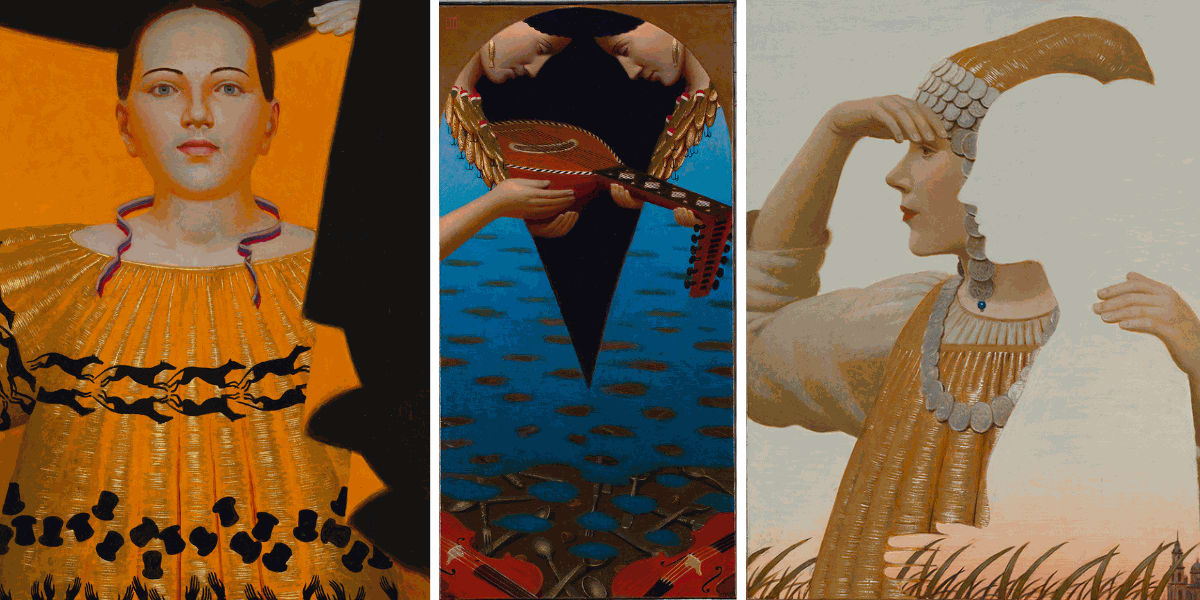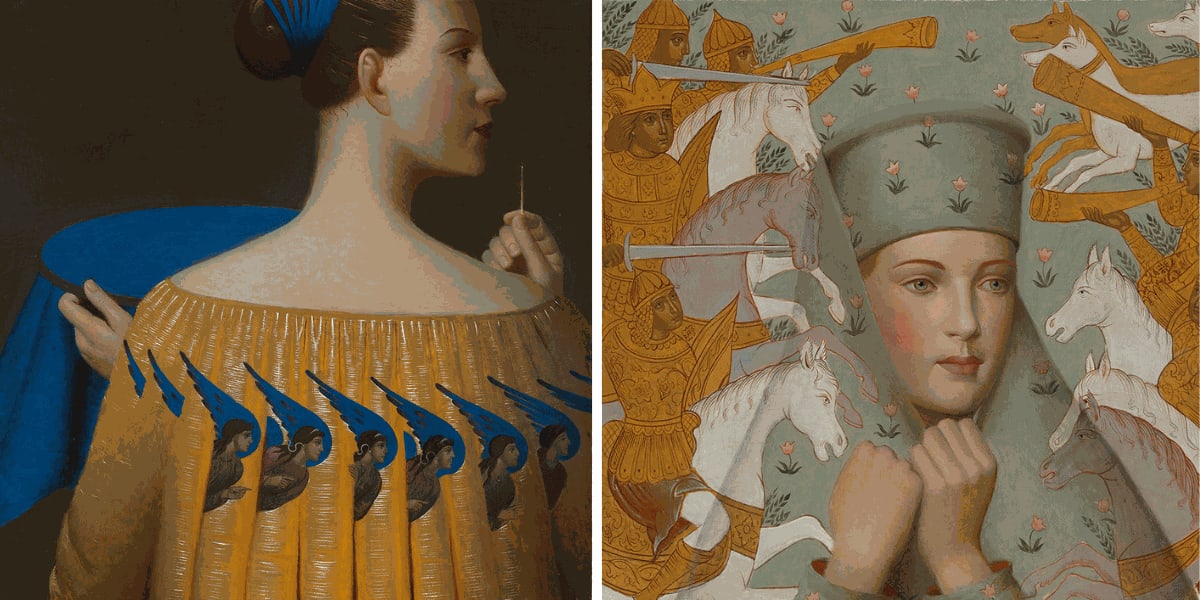

The Face of a Natural Force.
Each painting of the series represents different states of the soul and nature. "The battlefield" is the soul of a person in the fight against passions, “Direction of the wind” is a mystical feeling of connection to the nature. «The fireworks» is a feeling of glee and joy. «The thunder» and «The lightning» represent the thrill of indifferent force of nature, «The secret weapon» is a touch of mystery.
The series is inspired by Italy. Russian culture is famous for its sensitivity and susceptibility.
The Moscow Kremlin, The Cathedral of the Dormition, Cathedral of the Archangel were built by Italian architects and became an integral part of Russian culture.
Even the Russian big sundress, the famous sleeveless jacket, and kokoshnik as the origins of the Russian dress are found in an Italian clothing. Andrei Remnev often travels to Italy, and these experiences formed the basis of a new painting series. The visits to Pozzuoli and Naples, as well as love for the Italian artists Piero della Francesca and Benozzo Gozzoli are reflected in the new series. For many years Russian artists went to study in Italy, and Andrei Remnev is the heir of its culture.
Andrei Remnev's paintings are for leisurely watching, they are logical and rational. His technique is determined by his way of thinking and artistic temperament. Andrey Remnev’s method is a complex layering technique based on the 17th century painting. In Russia it was called "Fryazhskoe" (Italian) icon painting. It was carried out by egg tempera and completed with oil paints. It was the time when Russian culture has not yet broken up with its tradition, but at the same time experienced Italian influence. This influence affected both the technique and the whole vision.
It was the time of organic connection between Russian and world cultures.

The East. The West. Diptych.
The East represents rational attitude, Harlequin is the laughing culture of Europe, the possibility for self-irony.
Music on the water
The painting is dedicated to Carel Fabritius, the Dutch painter of the 17th century, a friend of Vermeer. Fabritius died tragically in Delft in 1654, in the explosion of the Delft gunpowder store which destroyed one third of the city. Having been in Delft, I really imagined this tragedy and portrayed my understanding of that moment. In my mind, the musical instruments, that Fabritius used to draw, have remained floating on the water canals of the city.
Direction of the wind.
The painting reflects the inextricable connection between man and nature, mystical living through
the natural forces, its spiritualization. The figure of the girl is associated with deep space, she entirely belongs to the horizon. This is what a modern man is so often deprived of living in a city. On the one hand, the coins on the headdress of the girl refer to the national headdress of the Chuvash people (the ethnic group lives on the Volga River). On the other hand, we can talk about the insignificance of money in the face of the natural forces.

Caldera
Caldera is the mouth of a sleeping volcano.
This painting compares the natural elements of the world and the natural elements of a man.
The inspiration came from the artist's visit to the city of Pozzuoli in the Gulf of Naples area. It is a center of seismic activity with people living on the edge of the volcano, exemplifying all humanity that lives in this manner expecting a catastrophe.
As at any moment the girl can start knocking out dust from the pillows, nature may trigger a disaster process.
The thunder and the lightning
A tribute of love to the work of Piero della Francesca. The sounds and the signs of nature are connected here.
The apple of the eye embodies lightning, the singing angel is the music of the spheres. The balance of the sound, that is thunder and the sign which is lightning.

The secret weapon
A piece of blue fabric symbolizes the sky. The needle piercing the sky is a symbol of an aggressive intervention in the elements of the sky. The painting also refers to the ancient question “How many angels can dance on the head of a pin? “
The question is related to the medieval theology of the scholastic school, where the most famous figure is St. Thomas Aquinas, 13th century Christian philosopher and Dominican friar.
It is a philosophical question and an elegant pun at once. "Needles point" - "needle tip" in archaic spelling and “needless point”— “useless question”.
The Battlefield.
The human soul is a place where passions fight.
The painting uses the iconography of 17th century murals of Rostov.
Every year Andrei Remnev organizes the workshop where he teaches the students of Institute named after Surikov murals copying techniques.
The background of the painting is composed in accordance with all the rules of the 17th century layered painting.

From the stove
It is dedicated to Italian ballet dancer Maria Taglioni, who was a great success in Saint Petersburg in the middle of the 19th century. For me the stove is a zone of peace and comfort. In those days for the ballet dancer it was a place in the vastness of the theater, where one can warm up and wait out the time between going out to a stage. I interpret the tradition of depicting everyday scenes on stove tiles through the illustration of the portrait types of theatre audience.
Sea of Marmara
The painting is the memory of the stones and marbles of Venice. Marble is a medium where the light dissolves. The pattern of natural stone veins is subjected to the elusive law of harmony, which makes one to forget about the time and immerse into the serene contemplation of a world where there is no shadow. The rhythm of crabs and fish is in tune with the underwater tapping of pebbles in the sea waves.

On tiptoe
This is a story about the elusive feeling that a person experiences when someone is sleeping in a house. For those who are awake, it is a necessity to move and speak in a special way, especially if someone is sleeping out of hours.
Ice water
A portrait painting was born from an arbitrarily applied soil texture. The color and the graphic elements of paint suggested the tonal and color spectrum of the composition, where the center is a girl's face, literally dissolving in the cold of silver gamut.


